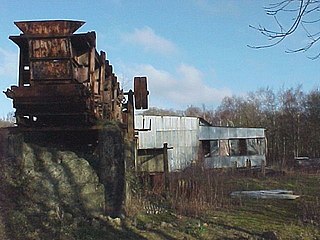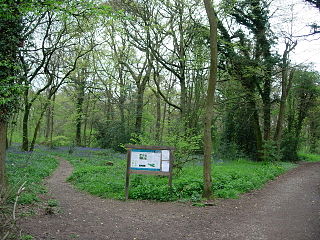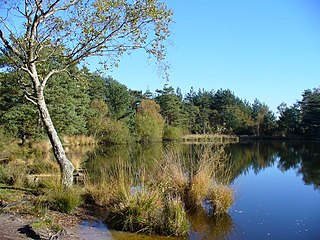| Site of Special Scientific Interest | |
 | |
| Area of Search | Surrey |
|---|---|
| Grid reference | SU 942 341 [1] |
| Interest | Geological |
| Area | 2.9 hectares (7.2 acres) [1] |
| Notification | 1992 [1] |
| Location map | Magic Map |
Netherside Stream Outcrops is a 2.9-hectare (7.2-acre) geological Site of Special Scientific Interest north-east of Haslemere in Surrey. [1] [2] It is a Geological Conservation Review site. [3]

A Site of Special Scientific Interest (SSSI) in Great Britain or an Area of Special Scientific Interest (ASSI) in the Isle of Man and Northern Ireland is a conservation designation denoting a protected area in the United Kingdom and Isle of Man. SSSI/ASSIs are the basic building block of site-based nature conservation legislation and most other legal nature/geological conservation designations in the United Kingdom are based upon them, including national nature reserves, Ramsar sites, Special Protection Areas, and Special Areas of Conservation. The acronym "SSSI" is often pronounced "triple-S I".

Haslemere is a town in the borough of Waverley in Surrey, England. It is north-east of the tripoint with Hampshire and West Sussex, approximately 12 miles (19 km) southwest of Guildford, and is the most southerly town in Surrey. The town is in the upper Wey valley and east of the A3, the major road between London and Portsmouth.

Surrey is a subdivision of the English region of South East England in the United Kingdom. A historic and ceremonial county, Surrey is also one of the home counties. The county borders Kent to the east, East Sussex and West Sussex to the south, Hampshire to the west, Berkshire to the northwest, and Greater London to the northeast.
This is the Type locality for the Netherside Sand Member of the Weald Clay Group, dating to the Lower Cretaceous around 130 million years ago. Upward sloping sandstone has fossil Lycopodites plants in vertical life positions. [4]
Type locality, also called type area, or type section, is the locality where a particular rock type, stratigraphic unit or mineral species is first identified. If the stratigraphic unit in a locality is layered, it is called a stratotype, whereas the standard of reference for unlayered rocks is the type locality.

Lycopodiopsida is a class of herbaceous vascular plants known as the clubmosses and firmosses. They have dichotomously branching stems bearing simple leaves called microphylls and reproduce by means of spores borne in sporangia at the bases of the leaves. Traditionally, the group also included the spikemosses and the quillworts but because these groups have leaves with ligules and reproduce using spores of two different sizes, both are now placed into another class, Isoetopsida that also includes the extinct Lepidodendrales. These groups, together with the horsetails are often referred to informally as fern allies.
A public footpath runs through the site.



















